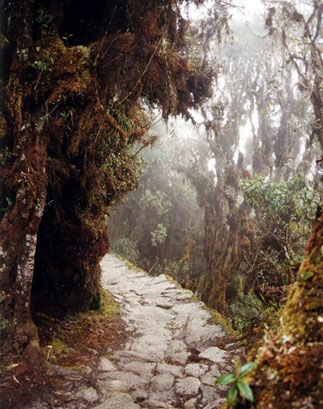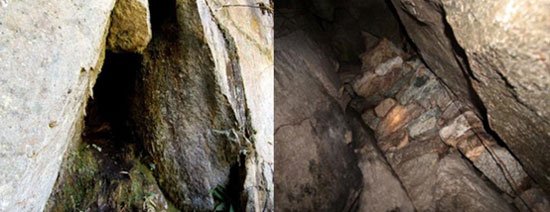
New section of Inca road leading to Machu Picchu discovered
A team of archaeologists have just announced their discovery of a new section of Inca Road in Peru which leads directly to the world famous ancient site of Machu Picchu, according to a report in Peru This Week. The road winds its way across a mountainside in the spectacular Andes and includes a five meter long tunnel, still intact 500 years after its construction.
Machu Picchu is the most familiar icon of Inca civilization, located 2,430 metres above sea level on a mountain ridge in the Cusco Region of Peru. Most archaeologists believe that Machu Picchu was built in the 15 th century as an estate for the Inca emperor Pachacuti (1438–1472). However, local legends denote that Machu Picchu was a sacred place built far earlier than that. The site is comprised of more than 200 buildings, temples, houses, pathways, fountains and altars all cut from grey granite from the mountain top. Polished dry-stone walls stretch throughout the estate and dozens of terraces have been carved into the mountainside.

The world famous Machu Picchu. Source: Wikipedia
As part of their road system, the Incas built a road to Machu Picchu, upon which thousands of tourists walk to visit the ancient site every year. Settlements, tunnels, and many Incan ruins are located along the 45 km trail before ending at the Sun Gate at Machu Picchu. The road was used as trade route and to bring goods and services to the mountain top city.
The true extent of the road network is not completely known, since the Spaniards, post conquest, either dug up the road completely in some areas, or allowed it to deteriorate and fall into ruin under iron-clad horses' hooves, or the metal wheels of ox-carts. Today, only 25 percent of this network is still visible, the rest having been destroyed by the construction of modern infrastructure. However, researchers at the Machu Picchu archaeological park have announced the discovery of a new section of Inca road.

A section of the well-known Inca trail in Peru. Source: Wikipedia
According to Andina news agency, the newly discovered road is about one and a half kilometres long and about 1.3 metres wide, depending on the terrain. The road begins at Wayraqtambo and leads up to a platform from which travellers can see parts of the complex at Machu Picchu. Much of the road has been covered over with vegetation, which is currently being cleared away, but archaeologists have identified the remains of retaining walls up to three metres high constructed with specially shaped rocks typical of Inca architecture, as well as a 5 metre long tunnel.

On the left, the entrance to the tunnel. On the right, inside the tunnel. Credit: Dirección Desconcentrada de Cultura de Cusco/El Comercio
"It is one of the finest examples of Inca engineering. It has been verified that the tunnel was built after the main road collapsed. So our ancestors fractured rock and began the work," said Fernando Astete, Head of the Archaeological Park of Machu Picchu.
Astete added that the newly discovered trail “could help to decongest the tourist flow at Machu Picchu.” According to UNESCO, the number of people hiking along the pathway rose from 6,000 in 1984 to 66,000 in 1998, and the trail has begun to deteriorate from erosion.
Featured image: The newly discovered Inca road. Credit: Dirección Desconcentrada de Cultura de Cusco/El Comercio















